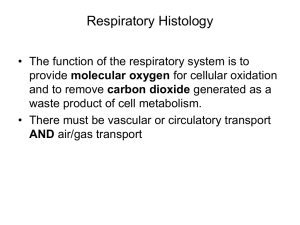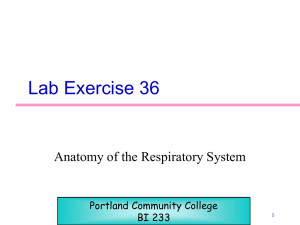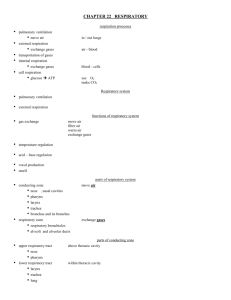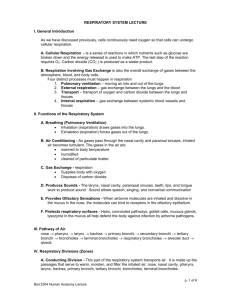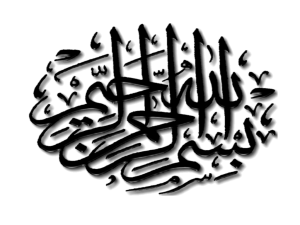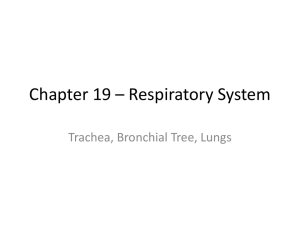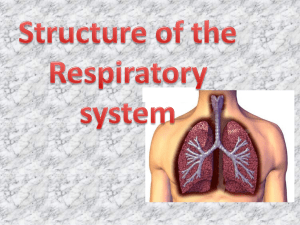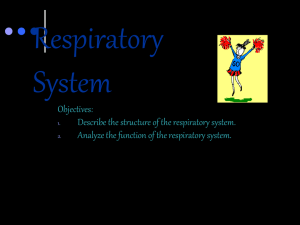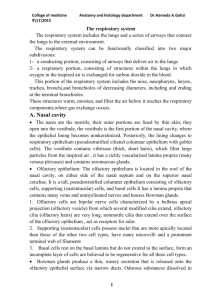Respiratory Histology - Stritch School of Medicine
advertisement
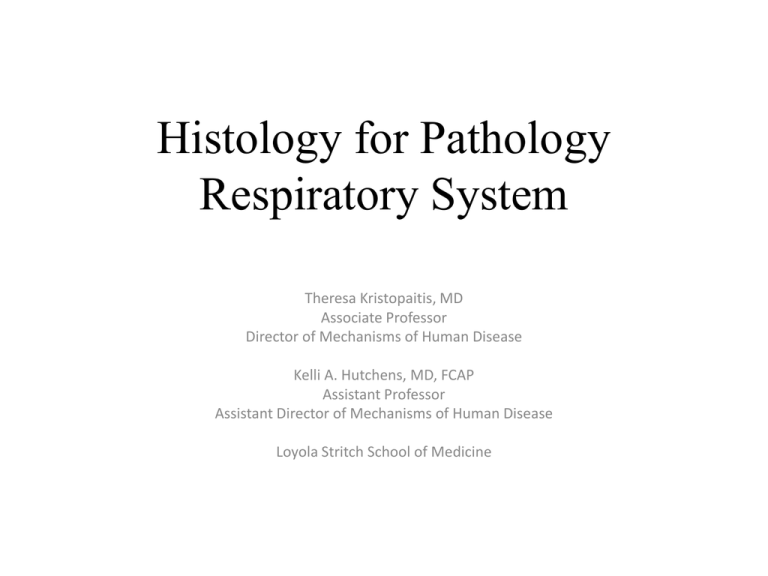
Histology for Pathology Respiratory System Theresa Kristopaitis, MD Associate Professor Director of Mechanisms of Human Disease Kelli A. Hutchens, MD, FCAP Assistant Professor Assistant Director of Mechanisms of Human Disease Loyola Stritch School of Medicine Objectives • In general terms describe the function of the conducting portion of the respiratory system • List the components of the conducting portion of the respiratory system • In general terms describe the function of the respiratory portion of the respiratory system • List the components of the respiratory portion of the respiratory system • Explain the function of “mucous” and list the cell type which produces it • Identify hyaline cartilage in a histologic section and describe its primary role in the respiratory system • Explain the key features of “respiratory epithelium” • On a histologic section distinguish the trachea vs bronchus vs bronchiole • List the cell types found in an alveolus • On a histologic section identify the alveolar septa, capillary, endothelial cell, and pneumocyte • Identify macrophages in a section of lung tissue and describe their function • Describe the path of an oxygen molecule from the trachea through the conducting portion of the airway into a capillary in the wall of an alveolus Conducting Portion • Upper Airway: bone, cartilage, and fibrous tissue lined by stratified squamous and ciliated pseudostratified columnar epithelia – Nasal Cavity – Pharynx • Nasopharynx • Oropharynx – Larynx • Epiglottis: elastic cartilage • Vocal cords: striated skeletal muscle / elastic fibers • Lower Airway: lined by respiratory epithelium – Trachea: C-shaped cartilage with smooth muscle – Bronchi • Extrapulmonary / primary bronchi: begin at the bifurcation of trachea and lead to lungs: extensions of the trachea • Intrapulmonary/secondary and tertiary bronchi: begin at lung hilum. Smooth muscle and hyaline cartilage plates – Bronchioles: no cartilage and Clara cells – Terminal bronchioles: increased Clara cells Functions: – – – – Transports Warms Humidifies Filters Conducting portion: Lower Airway • Trachea: connects larynx to primary bronchi – Mucosa: respiratory epithelium = ciliated pseudostratified columnar epithelium and lamina propria • Ciliated cells, goblet cells, basal cells, and neuroendocrine cells – Submucosa: dense connective tissue and seromucous glands – Hyaline cartilage: C-shaped; some smooth muscle (trachealis) to stabilize opening – Adventitia: connective tissue that covers cartilage Trachea Adventitia Submucosa Mucosa Hyaline Cartilage Trachea – Respiratory Epithelium Cilia Goblet Cells Conducting portion: Lower Airway • Main / Primary Bronchi (extrapulmonary bronchi) • Similar structure to trachea • Right is wider and more vertical than the left Conducting portion: Lower Airway • Secondary /Tertiary (Intrapulmonary ) Bronchi – Mucosa: respiratory epithelium as seen in trachea and primary bronchi – Smooth muscle band between submucosa and mucosa • Innervated by the sympathetic and parasympathetic systems – Submucosa: seromucous glands – Hyaline cartilage plates – Adventitia Bronchus, secondary Hyaline Cartilage Plates Smooth muscle band Conducting portion: Bronchioles • Mucosa: lined by respiratory epithelium with Clara cells replacing goblet cells – Dome shaped cells without cilia secrete glycosaminoglycans and secretory proteins • Clara cells increase as bronchioles give rise to terminal bronchioles • Epithelium gradually become mostly clara cells with cuboidal rather than ciliated epithelium as the terminal bronchioles near the respiratory bronchioles • Smooth muscle layer • No cartilage • Adventitia An electron microscope (EM) uses an electron beam to illuminate a specimen and produce a magnified image. Is able to achieve magnifications up to 10,000,000 x thus it is very useful to look at the ultrastructural characteristics of a cell. Clara Cell Electron micrograph (EM) of the respiratory mucosa. You can see the ciliated cells with interspersed Clara cells. Bronchiole Terminal bronchiole Respiratory portion Function: • Respiratory bronchioles: tubes – Gas Exchange between alveoli • Alveolar ducts/alveolar sacs: arise from respiratory bronchioles but have more alveoli and terminate as blind pouches • Alveoli: Thin-walled pouches lined by type I / type II pneumocytes Respiratory Portion: Respiratory Bronchioles • Tertiary bronchioles give rise to respiratory bronchioles • First airways to function in gas exchange • Lined by cuboidal cells and connect to alveoli and alveolar ducts Respiratory bronchioles, alveolar ducts, and alveoli b = respiratory bronchiole with alveolus (a) in its wall. Most of the wall of the bronchiole has a definite line of dark along it, signifying a cuboidal epithelium d & c = alveolar duct. Its wall consists almost entirely of alveoli, which have only a simple squamous lining, too flat to be visible here. e = alveoli (the smallest respiratory units) f = blood vessel (branch of pulmonary artery still) Respiratory Portion: Alveolar ducts and alveoli • Ducts are lined by squamous alveolar cells (type I pneumocytes) with knobs of cuboidal cells – Each duct functions as a corridor to connect several alveoli • Alveoli – 95%-97% Type I pneumocytes: flat dark oval nucleus and thin cytoplasm – Small percentage of Type II pneumocytes: can divide and replace type I cells – large polygonal cells at corner of alveoli. Secrete components of pulmonary surfactant. – Lined by septa = blood-air barrier for case exchange formed by delicate connective tissue and capillaries – Alveolar macrophages: aka dust cells, located in septa, often contain phagocytized material Alveolar Macrophages Alveolar spaces - Septa Type I Pneumocytes Type II Pneumocyte Illustrative EM EM showing basal lamina (1) between squamous alveolar epithelium (2 = Type I cell) and capillary endothelium (3). The nucleus at upper right belongs to the endothelial cell lining the capillary. The dark structure is a red blood cell. The capillary plus the alveolar linings on both sides constitute the inter alveolar septum that lies between two alveolar spaces.
